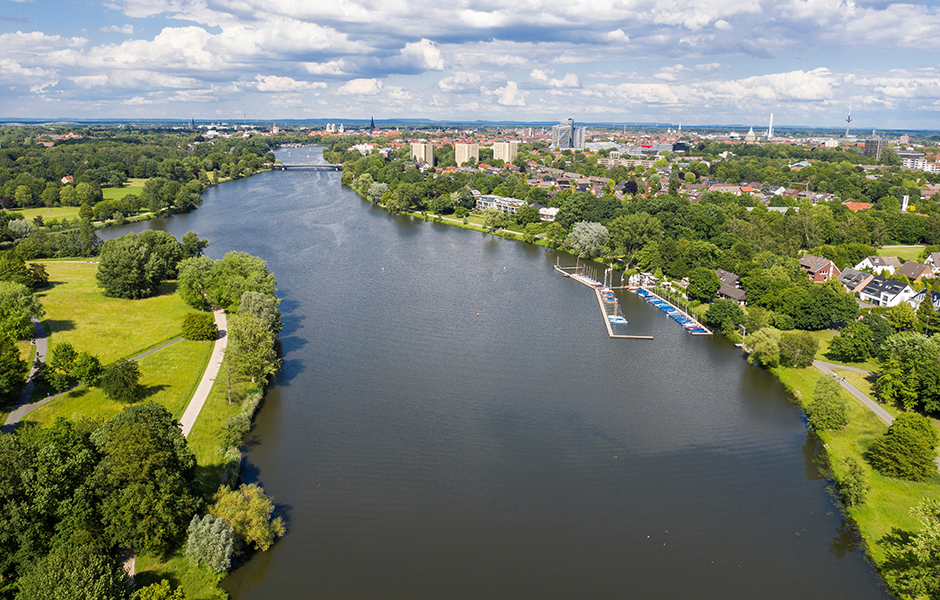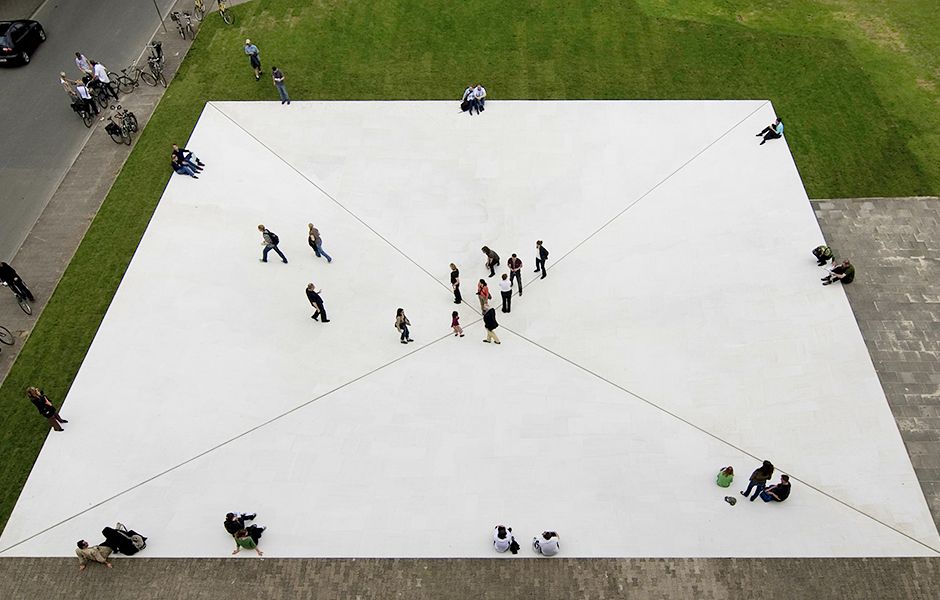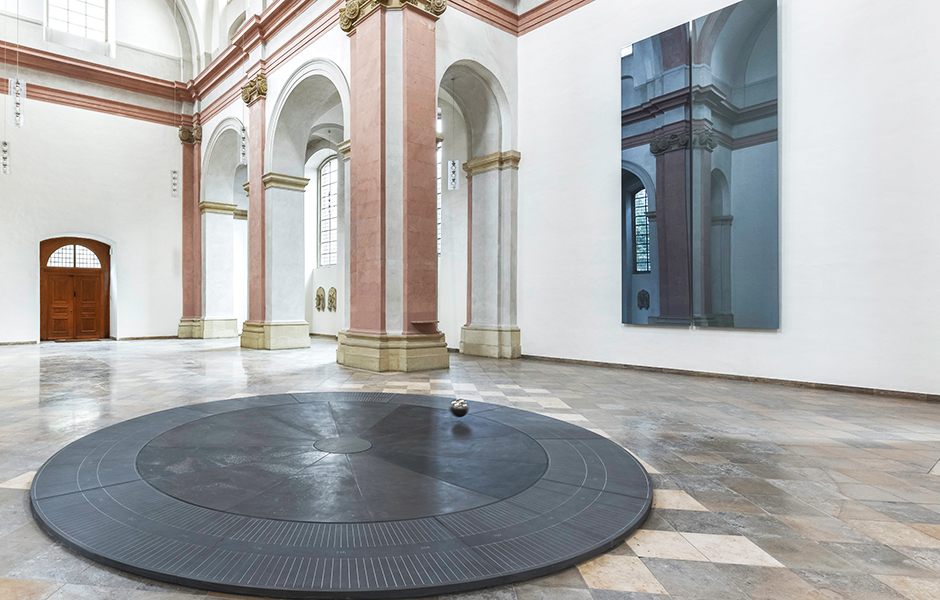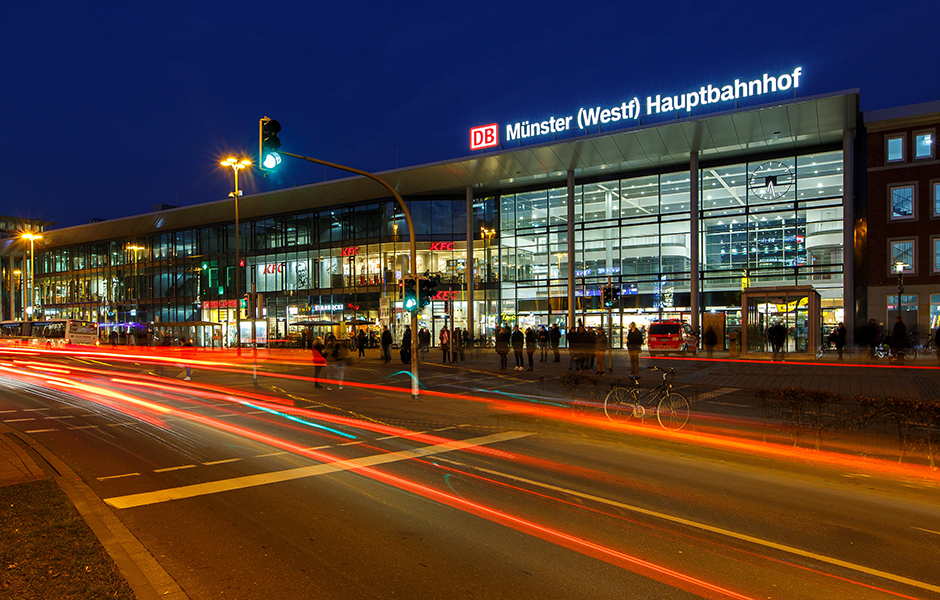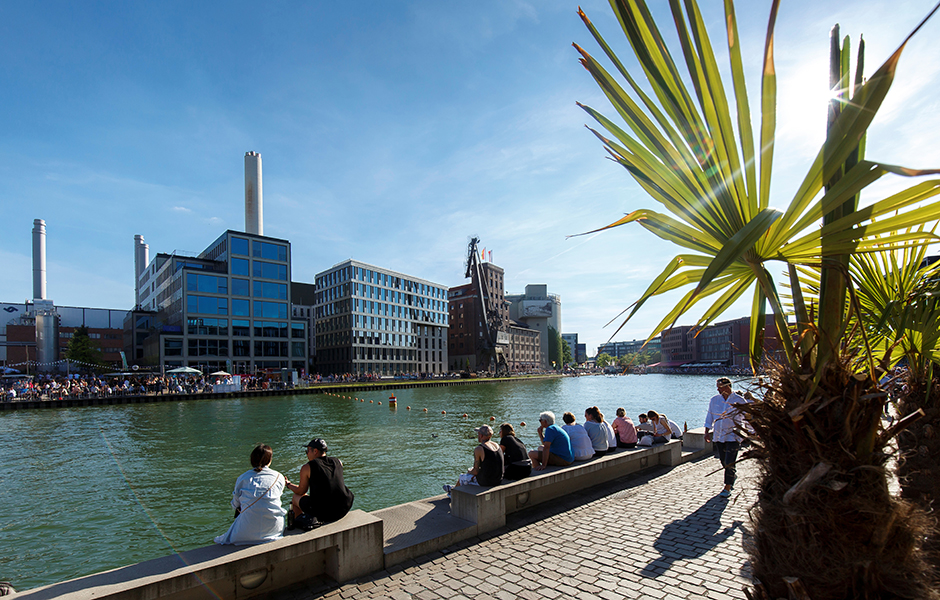Münster is one of the most attractive places to study in Germany. No less than eight universities are located here, the largest and best-known of which is the University of Münster. A total of 55,000 students have a lasting influence on life and culture in the city with its 310,000 inhabitants.
Broken down by age group, the 20 to 29-year-olds make up the largest group in Münster’s population with a share of 20 per cent. A constant inflow of young people from all over the world meets a city with a great history and many traditions. This creates friction and dynamics, provides for new ideas and contributes significantly to a lively, cosmopolitan urban society.
Münster offers a high quality of life. In 2018, a nationwide study even named it “the most liveable city in NRW”, convincing with, among other things, an extensive and broad range of cultural offers, many leisure and recreational facilities, as well as diverse shopping and nightlife options.
Münster has long been associated with contemporary art. The sculptural exhibitions Skulptur Projekte have contributed significantly to this. They are considered one of the most important exhibitions for art in public space worldwide. Organised every ten years by LWL-Museum für Kunst und Kultur since 1977, selected world-class artists are invited to realise site-specific works in urban space. The exhibition is seen as an experimental field for exploring and redefining the concept of sculpture. Selected exhibits remain permanently in the public space of the city so that the history of art in public space in Münster over the last four decades can be studied in a way that is unique in the world. Well over 500,000 visitors came to the fifth edition of the exhibition in 2017.
Apart from Skulptur Projekte, art in public space of international significance has also been and continues to be created in Münster. Examples of this are Eduardo Chillida’s sculpture “Tolerance through Dialogue”in the inner courtyard of the townhallor Gerhard Richter’s “Two Grey Double Mirrors for a Pendulum” in the Dominican Church.
Other important venues for the visual arts are LWL-Museum für Kunst und Kultur with its permanent collection ranging from the Middle Ages to the present day, Westfälischer Kunstverein, Kunsthalle Münster and Picasso Museum. With 5,000 works, Kunsthaus Kannen owns one of the largest German collections, after the Prinzhorn Collection, of outsider art and art brut in a psychiatric context.
Münster also has a diverse and very active independent art scene, to which not least the students at the University of Fine Arts Münster contribute. A studio house subsidised by the city and various free studio communities offer artists the opportunity to work in low-cost spaces.
The following links are an exemplary selection of sources on Münster and art:
- Skulptur Projekte Münster
- LWL-Museum für Kunst und Kultur
- Kunsthalle Münster
- Westfälischer Kunstverein
- Picasso Museum Münster (in German)
- Kunsthaus Kannen
- Studio house at the harbour (in German)
- Ateliergemeinschaft Schulstraße e. V. (in German)
- Studio community and exhibition hall Hawerkamp 31 e. V. (in German)
- Friends of contemporary art, FAK (in German)
Information from the City of Münster on art and culture in Münster
Münster is known as a city of culture in every respect. Whether it is theatre, museums, concerts, cinemas, dance, variety shows, clubs or festivals, whether it is established high culture, independent scene or alternative subculture – the cultural scope in all its facets is so extensive and diverse that any attempt at a brief description must fail.
The following links are therefore only intended as excerpts exemplifying the range:
- Theatres and stages in Münster
- Museums in Münster
- Cinema and film in Münster (in German)
- Music in Münster (in German)
- moNOkultur Münster e. V. – initiative of the free cultural scene in Münster (in German)
- b-side Kultur e. V. (in German)
- Sinfonieorchester Münster (in German)
- International Jazzfestival Münster
- Vainstream Rockfest (in German)
- Docklands Festival for electronic music
- Flurstücke – international street theatre festival (in German)
- Hawerkamp 31 e. V. – cultural grounds (in German)
- cuba – cultural and meeting centre (in German)
Cultural office of the City of Münster (in German)
In relation to the compact size of its urban area, Münster offers a very large number of leisure facilities and opportunities for recreation. The many inner-city parks and green spaces, such as the area around the Aasee lake, are especially remarkable. The lake, which is located directly in the city centre and covers a good 40 hectares, and the parkland surrounding it are the largest and most versatile local recreation area in Münster. It is an ideal spot for rowers, anglers and even sailors. The various branching lakeside paths are among the most popular routes for amateur runners. Likewise, almost at every turn, art in public space can be encountered at the Aasee: created during the Skulptur Projekte exhibitions, various works by international art stars remain here. The Wewerka Pavilion is also located here. Several times a year, students at the University of Fine Arts show site-specific works here.
The following links are an exemplary selection of information on leisure and recreation in Münster:
- Allwetterzoo Münster (in German)
- Botanic Garden of the University of Münster
- The Promenade – Münster’s green belt (in German)
- Indoor and outdoor swimming pools of the City of Münster (in German)
- Information portal of Aaseepark Münster (in German)
- Bicycle tours in and around Münster
- Sports in Münster
- University sports offer
By bicycle
Münster is still Germany’s bicycle capital. The well over 300,000 inhabitants have some 600,000 bicycles. The bike is a decisive factor in the Münster traffic. The cycleway network is one of the best in Germany – and with the “Promenade”, the city has a kind of car-free “bicycle highway” that circles the entire city centre. There are three bike stations in the city. The largest of them, situated at the main station, even offers a bike wash in addition to parking spaces and a workshop. The surrounding Münsterland is also known for its bicycle routes.
By bus and train using the semester ticket
Local and regional public transport has been well developed by Stadtwerke Münster and Regionalverkehr Münsterland. Completely renovated and modernised, the Münster Central Station was inaugurated in 2017.
The semester ticket allows students to make extensive use of public transport throughout North Rhine-Westphalia. The fee for the semester ticket is already included in the semester fee that is to be paid. The semester ticket of the University of Fine Arts Münster has been changed to an online ticket that can be downloaded or printed out again at any time.
- Further information on the Semesterticket and its area of validity (in German)
- Information on the bus service of Stadtwerke Münster (in German)
- Information from Deutsche Bahn
By car and plane
Car drivers will appreciate and take advantage of Münster being located directly on the A1 and A43 motorways. For the city centre, however, the use of the bicycle or public transport is not only recommended for ecological reasons. Everyday commuter traffic, in particular, habitually pushes the inner-city road network to its limits.
Less relevant for everyday student life, but interesting nevertheless: several attractive destinations within Germany and Europe can be reached from Münster/Osnabrück Airport, which is about 20 minutes away.
Münster’ great attractiveness also has a disadvantage: for some years now, the housing market in Münster has been extremely tight. It is not easy for students to find affordable housing on the open market. An alternative are the student residences of the Student Support Services Münster. This offer ranges from the classic room in a hall of residence to apartments and shared flats. The Student Support Services also provide emergency accommodation in cases of hardship. There are also special offers for students with children and students with disabilities.
In almost all cases, an application is necessary, which should be made very early.
All information can be found on the website of the Student Support Services under “Accommodation”. The City of Münster’s website also provides useful information for people looking for accommodation.








